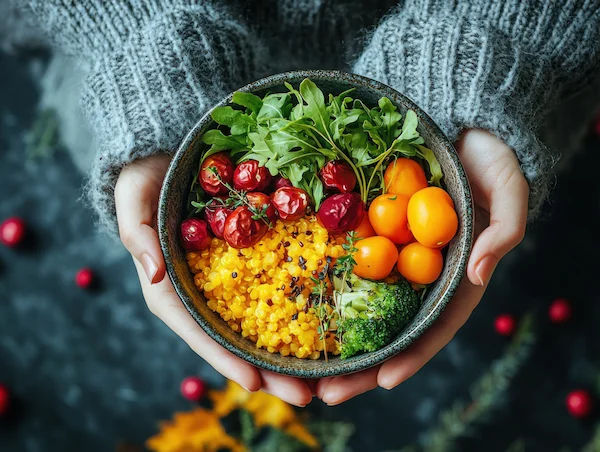Foods to Help Control Blood Pressure
Discover key foods that naturally help control blood pressure. Learn about nutrient-rich fruits, vegetables, and whole grains that support cardiovascular health and promote healthy blood pressure levels.

Written by Dr. Shaik Abdul Kalam
Reviewed by Dr. Rohinipriyanka Pondugula MBBS
Last updated on 21st Aug, 2025

Introduction
High blood pressure, or hypertension, is a common condition that affects millions of people worldwide. If left uncontrolled, it can lead to serious health problems like heart disease, stroke, and kidney damage. The good news is that making simple changes to your diet can significantly help manage blood pressure. In this article, we’ll explore some of the best foods to keep your blood pressure in check and how they work.
Understanding Blood Pressure
Blood pressure is the force of blood pushing against the walls of your arteries. A normal reading is around 120/80 mmHg. When it consistently stays above 130/80 mmHg, it’s considered high.
Factors like stress, lack of exercise, smoking, and an unhealthy diet can contribute to hypertension. However, eating the right foods can help lower and maintain healthy blood pressure levels.
Best Foods to Lower Blood Pressure
The best foods to lower blood pressure:
1. Leafy Greens (Spinach, Kale, Swiss Chard)
Leafy greens are rich in potassium, which helps your kidneys remove excess sodium from your body—a key factor in lowering blood pressure.
Tip: Add a handful of spinach to your smoothies or salads for an easy potassium boost.
2. Berries (Blueberries, Strawberries, Raspberries)
Berries contain flavonoids, natural compounds that help relax blood vessels and reduce blood pressure.
Tip: Enjoy a bowl of mixed berries as a snack or add them to yogurt for a hearthealthy treat.
3. Oats
Oats are high in fiber and low in sodium, making them great for blood pressure control. They also help reduce bad cholesterol (LDL).
Tip: Start your day with a bowl of oatmeal topped with nuts and fruits.
4. Bananas
Bananas are packed with potassium, which balances sodium levels and eases tension in blood vessels.
Tip: Slice a banana into your cereal or have one as a quick snack.
5. Beets
Beets contain nitrates, which help widen blood vessels and improve blood flow. Studies show that drinking beet juice can lower blood pressure within hours.
Tip: Try roasted beets in salads or blend them into a juice.
6. Garlic
Garlic has natural blood thinning properties and helps relax blood vessels by increasing nitric oxide production.
Tip: Add fresh garlic to soups, stir fries, or salad dressings.
7. Fatty Fish (Salmon, Mackerel, Sardines)
Fatty fish are rich in omega3 fatty acids, which reduce inflammation and lower blood pressure.
Tip: Grill or bake fish twice a week for heart healthy benefits.
Health topic carousel:
Doctor's speciality: Nutrition
Text: Consult a Top Nutritionist
8. Yogurt (Low-Fat or Greek Yogurt)
Yogurt is high in calcium, which plays a role in blood vessel function. Opt for unsweetened varieties to avoid added sugars.
Tip: Mix yogurt with nuts and honey for a nutritious snack.
9. Nuts and Seeds (Almonds, Flaxseeds, Pistachios)
Nuts and seeds provide magnesium, which helps regulate blood pressure by relaxing blood vessels.
Tip: A handful of unsalted almonds or pumpkin seeds makes a great snack.
10. Dark Chocolate (70% Cocoa or Higher)
Dark chocolate contains flavonoids that improve blood flow and lower blood pressure.
Tip: Enjoy a small piece (about 1 ounce) as an occasional treat.
Foods to Avoid for High Blood Pressure
While adding these healthy foods to your diet, it’s also important to limit or avoid the following:
Processed foods (chips, canned soups, deli meats) – high in sodium
Sugary drinks (soda, energy drinks) – can increase blood pressure
Excess alcohol – raises blood pressure over time
Fried and fast foods – high in unhealthy fats
Lifestyle Tips for Managing Blood Pressure
Along with a healthy diet, these habits can help keep your blood pressure in check:
Exercise regularly – Aim for 30 minutes of walking, swimming, or cycling daily.
Reduce salt intake – Opt for herbs and spices instead of salt.
Manage stress – Practice deep breathing, meditation, or yoga.
Maintain a healthy weight – Even a small weight loss can improve blood pressure.
Get enough sleep – Poor sleep can contribute to hypertension.
When to See a Doctor?
If you’re struggling to control your blood pressure despite dietary changes, consult a doctor. They may recommend medication or further tests.
Need help managing your blood pressure?
Book a consultation with a specialist on Apollo 24|7 for personalized advice and treatment options.
Final Thoughts
Eating the right foods can make a big difference in controlling blood pressure. By including more potassium rich fruits, leafy greens, whole grains, and healthy fats in your diet—while cutting back on processed and salty foods—you can take a big step toward better heart health.
Remember, small changes add up over time. Start with one or two healthy swaps today, and your heart will thank you!
Health topic carousel:
Doctor's speciality: Nutrition
Text: Consult a Top Nutritionist




